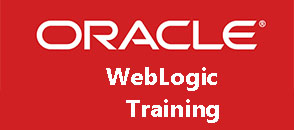


![]() Online Training
Online Training
![]() Corporate Training
Corporate Training
![]() Classroom
Classroom
This five-day Oracle WebLogic Server 11g course will teach Web administrators techniques for installing and configuring Oracle WebLogic Server 11g. Expert Oracle University instructors will teach you how to deploy Java EE applications to Oracle WebLogic Server 11g using Administration Console and command-line and scripting tools like WLST.
Increase the performance and scalability of your organization’s applications and services with the #1 application server. Simplify deployment and significantly improve time-to-market. You'll also learn to configure Oracle HTTP Server as the Web interface for Oracle WebLogic Server, along with supporting failover and load balancing for applications. This course provides an overview of the administrative tasks performed by a WebLogic Server administrator. At the end of the course, you will have gained knowledge at an associate level of competency.
Web server administrators, project managers, developers and consultants who want to gain the knowledge of WebLogic Server administration.
Expert Instructors
Practical Implementation
Real- time Case Studies
Certification Guidance
Resume Preparation
Placement Assistance
Copyright 2018 © www.unitedglobalsoft.com . All right reserved | Sitemap | Privacy Policy | Terms Of Services